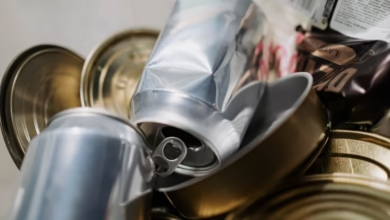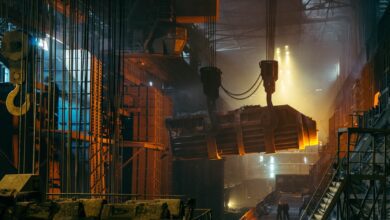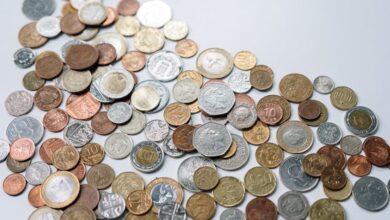Unlocking the Secrets of Metallurgy: A Comprehensive Guide to Metals, Investing, and Sustainable Production

Metallurgy is a fascinating field that encompasses the science and technology of working with and refining metals. From the ancient techniques of metal mining to modern advancements in metal fabrication, metallurgy plays a critical role in our daily lives and various industries. As we navigate through an age increasingly focused on sustainability and innovation, understanding the different categories of metals—such as ferrous and non-ferrous metals—becomes essential. This article will delve into the foundations of metallurgy, exploring the distinctions between industrial metals and precious metals, and highlighting current trends in gold and silver investing. Furthermore, we will examine the latest innovations in sustainable metal production, including advancements in metal recycling and fabrication techniques that are transforming how we utilize resources. Whether you're interested in jewelry metals, aerospace metals, or battery metals, this comprehensive guide will shed light on the integral role of metallurgy in shaping our world and its future.
- 1. The Foundations of Metallurgy: Understanding Ferrous and Non-Ferrous Metals
- 2. Exploring Precious and Base Metals: Trends in Gold and Silver Investing
- 3. Sustainable Metal Production: Innovations in Metal Recycling and Fabrication Techniques
1. The Foundations of Metallurgy: Understanding Ferrous and Non-Ferrous Metals
Metallurgy serves as the backbone of metal production and processing, fundamentally categorized into two main types of metals: ferrous and non-ferrous. Understanding these categories is crucial for various applications, including construction, automotive, aerospace, and jewelry.
Ferrous metals, which contain iron, are known for their strength and durability. Common examples include steel and cast iron. These metals are widely utilized in construction and automotive sectors due to their excellent mechanical properties and cost-effectiveness. However, one of the challenges associated with ferrous metals is metal corrosion, which can significantly affect their longevity. To combat this, industries often employ strategies such as coatings or alloying with non-ferrous elements to enhance corrosion resistance.
On the other hand, non-ferrous metals do not contain significant amounts of iron. This category includes a diverse range of industrial metals such as aluminum, copper, zinc, platinum, and palladium, as well as precious metals like gold and silver. Non-ferrous metals are generally more resistant to corrosion and are lighter than ferrous metals, making them ideal for applications in aerospace and energy sectors. For instance, aluminum is extensively used in aircraft manufacturing due to its favorable strength-to-weight ratio.
The recent trend towards sustainable metal production has led to an increased focus on metal recycling, particularly for base metals like aluminum and copper. With the rising demand for rare earth metals and battery metals, such as lithium, the importance of efficient metal recycling processes cannot be overstated. Not only does this practice reduce environmental impacts, but it also addresses the growing concerns associated with metal mining, which can deplete natural resources and disrupt ecosystems.
Moreover, the advent of 3D printing metals is revolutionizing the metallurgy landscape, allowing for the creation of complex metal alloys with enhanced properties tailored for specific applications. This innovative approach is particularly significant in sectors like aerospace and automotive, where precision and performance are paramount.
As we delve deeper into the world of metallurgy, understanding the distinctions between ferrous and non-ferrous metals is essential not only for engineering applications but also for investment strategies. Gold investing and silver investing, for example, have become increasingly popular as investors seek to diversify their portfolios with precious metals. Similarly, the market for metal commodities continues to evolve, influenced by trends in sustainability and technological advancements.
In conclusion, the foundations of metallurgy encompass a wide array of metals and their unique properties. By recognizing the differences between ferrous and non-ferrous metals, industries can optimize their processes and products, paving the way for innovative applications and sustainable practices in metal production and fabrication.
2. Exploring Precious and Base Metals: Trends in Gold and Silver Investing
In recent years, the landscape of precious and base metals has seen significant shifts, particularly in gold and silver investing. Investors and industries alike are increasingly recognizing the importance of these metals not only for their intrinsic value but also for their role in various applications, from jewelry to advanced technologies.
Gold investing has always been synonymous with wealth preservation and a hedge against inflation. The demand for gold remains robust, particularly in emerging markets where gold jewelry continues to be a cultural staple. This trend is coupled with a growing interest in sustainable metal production, as consumers seek ethically sourced materials. Moreover, the rise of metal recycling initiatives is enhancing the availability of recycled gold, thereby reducing the environmental impact associated with traditional metal mining.
Similarly, silver investing is gaining traction, driven by its unique properties that make it an essential component in various industries. Silver's conductivity and reflective capabilities make it a sought-after material in electronics, solar energy applications, and automotive sectors. As industries pivot toward renewable energy solutions, the demand for silver is expected to rise, further solidifying its status as a critical industrial metal.
When examining the broader spectrum of metals, it's essential to differentiate between precious metals like gold and silver and base metals such as copper, zinc, and aluminum. Base metals are pivotal in construction, automotive, and energy sectors, while precious metals often serve as investment vehicles and stores of value. The ongoing trends in metal commodities indicate a shift towards non-ferrous metals, which are increasingly favored due to their resistance to corrosion and versatility in applications.
Investors should also keep an eye on rare earth metals and battery metals, such as lithium and cobalt, which are becoming increasingly vital in the production of electric vehicles and renewable energy technologies. These metals are integral to the future of sustainable metal production and are expected to trend upward as global demand for clean energy solutions accelerates.
In conclusion, the trends in gold and silver investing reflect broader movements within the metals market, where sustainability, recycling, and technological advancements are reshaping investment strategies. Whether through precious metals or industrial applications, understanding metallurgy and the properties of various metals can provide valuable insights into investment opportunities and market dynamics.
3. Sustainable Metal Production: Innovations in Metal Recycling and Fabrication Techniques
As the demand for sustainable practices grows, the field of metallurgy is witnessing significant innovations in metal recycling and fabrication techniques. Sustainable metal production not only helps in conserving resources but also reduces environmental impacts associated with metal mining.
One of the primary advancements in this area is the enhanced efficiency of metal recycling processes. Traditional methods of recycling ferrous and non-ferrous metals, such as steel, aluminum, and copper, are being revolutionized through the use of advanced technologies. For instance, the integration of 3D printing metals allows for more precise fabrication techniques, minimizing waste and energy consumption. This method is particularly useful in producing complex metal alloys that are essential in industries such as aerospace, automotive, and construction.
Moreover, innovations in recycling precious metals like gold and silver are making it easier to reclaim these resources from electronic waste and other discarded materials. This not only supports gold investing and silver investing but also ensures that rare earth metals, which are crucial for electronics and renewable energy technologies, are reused effectively.
Additionally, the development of greener methods for metal production, such as hydrometallurgy and bioleaching, is gaining traction. These techniques leverage natural processes and reduce reliance on harsh chemicals, thereby minimizing metal corrosion and environmental degradation.
Further, the rise of battery metals, including lithium and cobalt, is prompting the metallurgical industry to focus on sustainable sources and recycling practices to meet the increasing demand driven by electric vehicles and renewable energy solutions.
In conclusion, the landscape of sustainable metal production is evolving, driven by innovative recycling and fabrication techniques that not only enhance the efficiency of using industrial metals but also address the pressing need for eco-friendly practices in metallurgy. Embracing these trends ultimately contributes to a circular economy, where metal commodities are continuously reused and repurposed, thereby reducing the need for extensive metal mining and preserving our planet for future generations.
In conclusion, metallurgy is a vital field that underpins various industries, from construction to aerospace, and plays a crucial role in the modern economy. Understanding the foundations of metallurgy, including the distinctions between ferrous and non-ferrous metals, provides insight into the materials that drive industrial innovation. With the rising interest in precious metals like gold and silver investing, it is essential to stay informed about market trends and the factors affecting metal commodities.
Moreover, as we face growing environmental challenges, sustainable metal production has become more critical than ever. Innovations in metal recycling and fabrication techniques are paving the way for a circular economy, allowing us to maximize the value of both base metals and rare earth metals while minimizing waste. The advancements in technologies such as 3D printing metals and the development of battery metals signify exciting trends in metallurgy that promise to enhance efficiency and sustainability across various sectors.
As we look to the future, the interplay between metal mining, metal alloys, and the evolving landscape of metal corrosion resistance will shape the next generation of industrial and jewelry metals. By embracing these developments, we can ensure that metallurgy continues to contribute to a more sustainable and prosperous future, meeting the demands of industries while preserving our planet’s resources.





